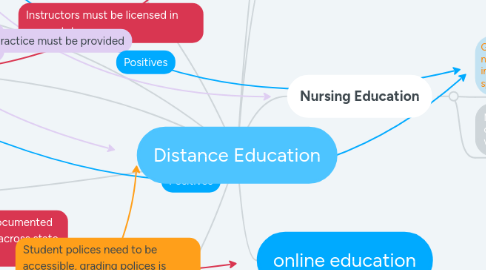Distance Education
by kathleen momsen


1. correspondence courses
2. Federal Regulations (HIGHER EDUCATION OPPORTUNITY ACT dkrause on GSDDPC44 with PUBLIC LAWS, 2005)
3. Regional and program-level accreditors
4. CCNE (American Association of Colleges of Nursing (AACN) > CCNE Accreditation > Who We Are > Resource Documents & Webinars > CCNE Standards & Professional Nursing Guidelines, 2021)
5. NLN CEAA (National League for Nursing COMMISSION FOR NURSING EDUCATION ACCREDITATION ACCREDITATION STANDARDS FOR NURSING EDUCATION PROGRAMS, 2016)
6. online education
7. Nursing Education
7.1. Greater accessablity, flexable, non-traditional students, increase inrollement , cost effective, no cost for space
7.2. Need for face to face contact, lack of tech or access for all, lack of communication with faculty
8. Staff Development and Resources for nurse educators
8.1. NLN: faculty must be provided with opportunties and resources to engage in professional development
8.1.1. Guided workshops with "super uses" from other institutions
8.2. Negative: need for organization, no student interactions
8.2.1. Course implementation from center focus to supporter of learning is difficult transition for some educators
